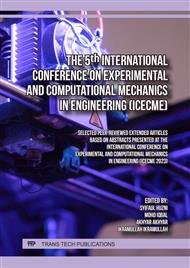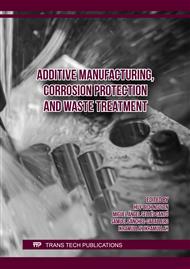p.31
p.39
p.47
p.59
p.65
p.73
p.85
p.95
p.105
The Effect of Activating Agent and Activation Temperature on the Characteristics of Palm Empty Fruit Bunch Charcoal as CO2 Adsorbent
Abstract:
The escalating levels of atmospheric carbon dioxide (CO2) emissions and the consequential threat of global warming necessitate urgent measures for CO2 reduction. This study explores the development of CO2 adsorbents from biomass, specifically charcoal derived from empty palm bunches, focusing on the impact of different activating agents and activation temperatures on their properties. The research methodology involves the hydrothermal carbonization of empty palm fruit bunches followed by activation using three different materials: potassium hydroxide (KOH), urea, and a combination of KOH and urea, at three distinct activation temperatures (180°C, 200°C, and 220°C). The investigation encompasses a comprehensive analysis of the functional groups and surface morphology through Fourier-transform infrared (FTIR) spectroscopy and scanning electron microscopy (SEM) techniques. The findings demonstrate that the choice of activating agent and activation temperature significantly influences the characteristics of the resultant charcoal. Notably, higher activation temperatures lead to reduced lignin content and increased pore distribution. Among the various combinations, the KOH + Urea activating agent at 220°C exhibits the most favorable attributes, including the weakest lignin peak intensity and the highest pore distribution. In conclusion, this research underscores the potential of empty palm bunch charcoal as a promising CO2 adsorbent, offering insights into optimized conditions for its production. This contributes to the ongoing global efforts to combat climate change by mitigating CO2 emissions.
Info:
Periodical:
Pages:
105-112
Citation:
Online since:
March 2025
Keywords:
Price:
Сopyright:
© 2025 Trans Tech Publications Ltd. All Rights Reserved
Share:
Citation:



